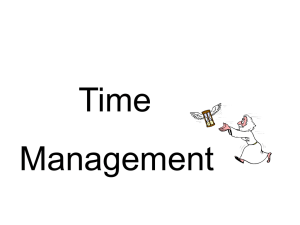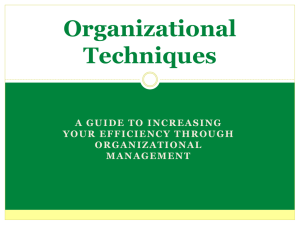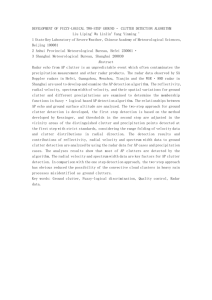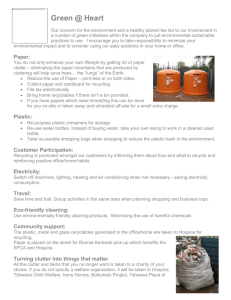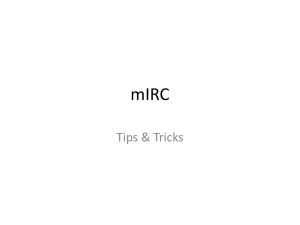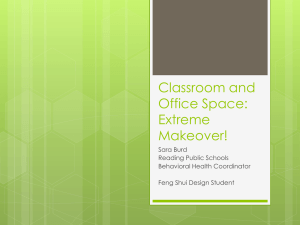Article (10) Staying Organized and Stress - Do It Yourself
advertisement
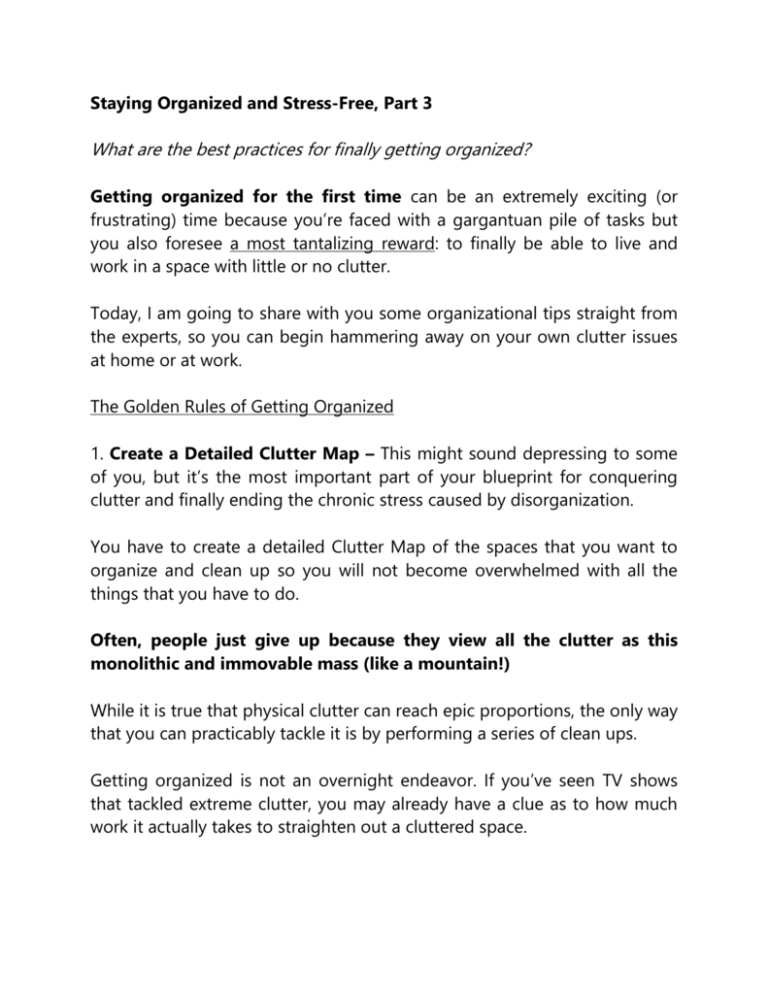
Staying Organized and Stress-Free, Part 3 What are the best practices for finally getting organized? Getting organized for the first time can be an extremely exciting (or frustrating) time because you’re faced with a gargantuan pile of tasks but you also foresee a most tantalizing reward: to finally be able to live and work in a space with little or no clutter. Today, I am going to share with you some organizational tips straight from the experts, so you can begin hammering away on your own clutter issues at home or at work. The Golden Rules of Getting Organized 1. Create a Detailed Clutter Map – This might sound depressing to some of you, but it’s the most important part of your blueprint for conquering clutter and finally ending the chronic stress caused by disorganization. You have to create a detailed Clutter Map of the spaces that you want to organize and clean up so you will not become overwhelmed with all the things that you have to do. Often, people just give up because they view all the clutter as this monolithic and immovable mass (like a mountain!) While it is true that physical clutter can reach epic proportions, the only way that you can practicably tackle it is by performing a series of clean ups. Getting organized is not an overnight endeavor. If you’ve seen TV shows that tackled extreme clutter, you may already have a clue as to how much work it actually takes to straighten out a cluttered space. Even an army of a dozen men will require several days of continuous cleaning and clearing to straighten out two large rooms of an ordinarysized house. I am stating these facts not to discourage people from trying but to empower others to start as soon as possible if they want to see results quickly. Now, it’s important that you set specific goals for yourself as you create a detailed Clutter Map. You need goals and milestones so have clear proof that you are progressing with your de-cluttering efforts. 2. Start Right Now – Starting right now sounds a bit crazy, but there is no better time to get organized than the present time. As soon as you get up from your chair or bed, start clearing away at the clutter nearest you. If you don’t have a Clutter Map yet, that’s alright: you can make one after you spend a few minutes getting organized. It doesn’t matter if you can only clear one table or cabinet at a time. The important thing is you’ve actually started something and you can immediately see the difference when you dip your toes into getting organized. 3. Get Serious About Clutter – In all my years of coaching people with stress-related problems, I’ve found that one of the most challenging hurdles is to start taking something new seriously. I have met countless people who thought “stress management” was simply a fad or worse, a joke – as if millions of people weren’t suffering from toxic and chronic stress. If you have a similar mindset about getting organized, let me be the first person to tell you that you’re going to have a hard time freeing yourself of clutter if you don’t take things seriously. Surprisingly, the best attitude to motivate yourself to start de-cluttering your home or office is to get really angry at the disorganization of your living or working spaces. If you start viewing clutter as the enemy or at the very least, an overstaying guest in your living space, you will begin to take clutter very seriously and you will no longer allow yourself to make more excuses not to clean up. 4. Don’t Be Afraid to Dive Into Deep Clutter – Clearing clutter can become a frustrating and anxiety-causing enterprise when you begin seeing the extent of the disorganization that you have to tackle. I call this “fighting from the trenches”. The effort needed to clear clutter and stay organized is literally a battle against present and future clutter. Here are some tips to stay strong even if you feel like you’re already sinking while cleaning up your living spaces: i. If you can’t think of a good use for something, choose any of these three: throw it away, sell it or donate it. ii. People often make 2 piles when de-cluttering their home or office: a “keep” pile and a “throw away” pile. Check your “keep” pile to see if you can discard more stuff. Thin it out a few times to make sure you’re not hanging on to useless stuff. iii. When you decide to throw away something, forget about it and move forward. If you keep reviewing your “throw away” pile you will only become emotionally and physically drained. iv. Create a small support network so you can call someone if things get too intense or difficult. v. If you can’t throw away something because you might use it someday, put it in a box and write the date that is exactly three months from the day you placed the item in the box. If you didn’t even touch the item after 3 months, discard it!

